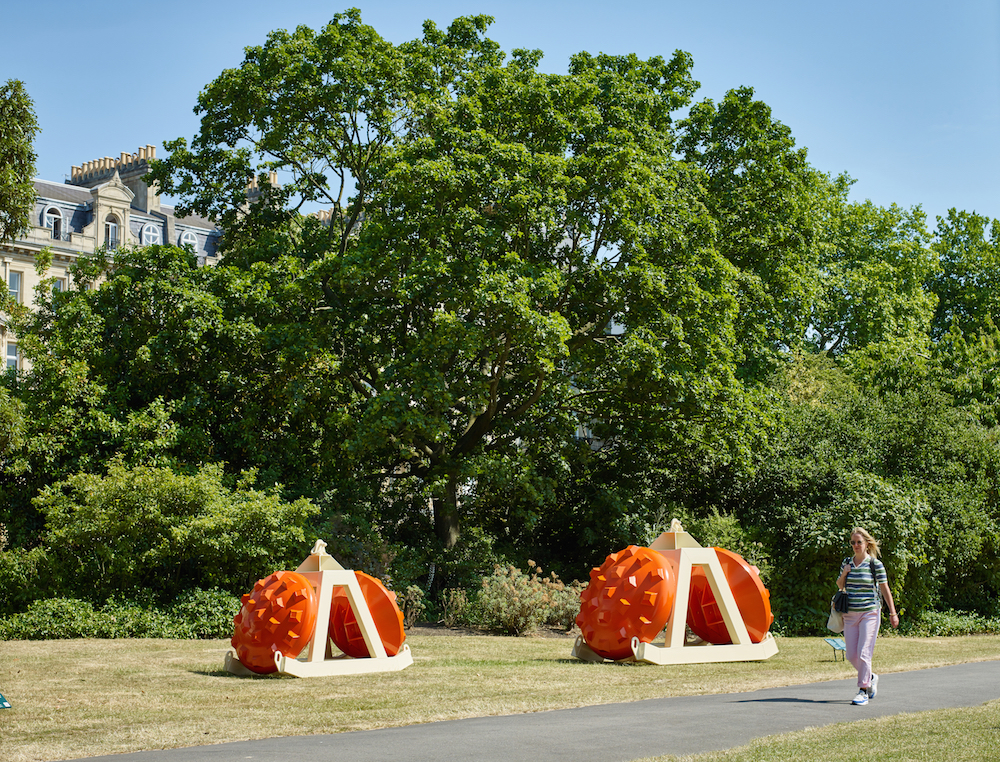Exhibition Text
James Capper: WAYS TO MAKE A SHIP WALK
Hannah Barry Gallery, London
Written on the occation of WAYS TO MAKE A SHIP WALK, a solo exhibition of work by James Capper presented at Hannah Barry Gallery (27 September – 27 October 2018), to conicide with his participation in the 2018 Frieze Sculpture Park (3 July— 7 October 2018).
The exhibition text focused on themes of aquatic biological innovation apparent in the locomotive mechanims of early terrestrial creatures—in particluar, the mudskipper. This was explored in relation to James’ continuing research into how evolutionary theory informs engineering and mechanics, and his soon-to-be realised sculpture, MUDSKIPPER, a full scale amphibious ship that can walk out water.

Extract —
“The ingenuity of biological lifeforms has long inspired advances in human technology, and the contemporary world of engineering and mechanics continue to look to the organic world to solve complex technical challenges. As early as the year 231, Chinese army commanders had modelled an “artificial cow” for the efficient transportation of food to faraway troops. Fast-forward to 2018, we have designed soft-robotic pneumatic systems with the exact anatomy of a living octopus, designed to reach difficult surgical zones or to overcome complicated obstacles in search-and-rescue missions. James Capper’s ambitious, multi-scale WALKING BOAT sculptures—researched, drawn and developed over the last 10 years—are embedded within this narrative: the reciprocal dialogue between the organic and the technical world, between biomechanics and the human.
The history of evolution is echoed in James Capper’s frequent aesthetic and conceptual reference to the organic or biological, pitched alongside an interest in technology, innovation and systems of heavy industry. His unique sculptural language evolves along different modular chains he terms ‘Divisions’, a network of interrelated sculpture families each grouped according to their specialised application. His WALKING BOAT sculptures are part of the ‘Offshore Division’, designated for use on and off water. The colonisation of land by aquatic lifeforms has a long evolutionary history. Beginning some two billion years ago, multiple genealogies chart the rise of species that erupted after the macro-ecological jump onto the earth, as a once uninhabitable world now flourished with life. Protected by a newly formed ozone layer, early invertebrates and amphibians bravely leapt into the dark terrene, their newly encountered ecosystem soon demanding a chassis capable of symmetric, mechanised movement.
Responding to this history, James Capper has developed MUDSKIPPER, an amphibian sculpture fully mechanised for movement across land and water, as well as related sculpture components that function as both attachment parts for MUDSKIPPER and autonomous sculptures. For the ‘Offshore Division’, these component parts are called TREADPADS, disc-shaped feet which permit the full-scale sculpture to be mobile. TREADPAD diameter depends on the size and weight of the larger sculpture it carries, and the shapes patterning the surface of the pad - diamond, convex, frustum - are determined by the terrain on which it is active - rock, sand, shingle… Two pairs of TREADPADS are shown as part of Frieze Sculpture, and are on display in Regent’s Park until 7 October.”
